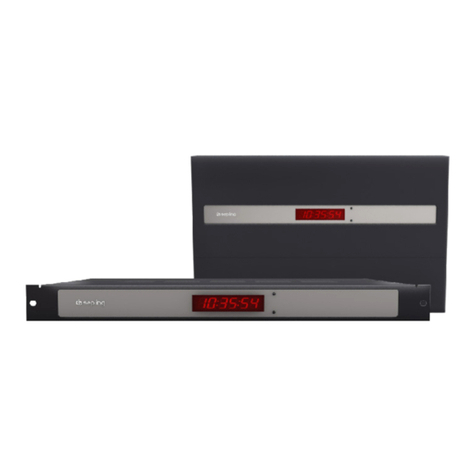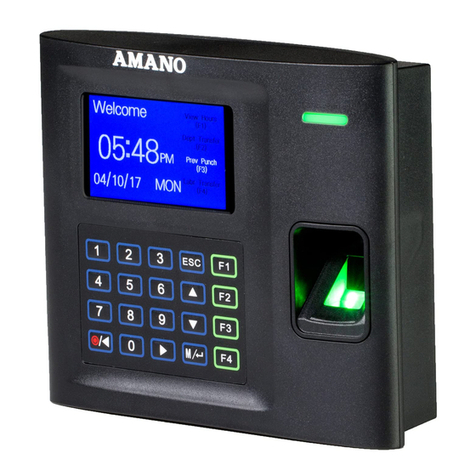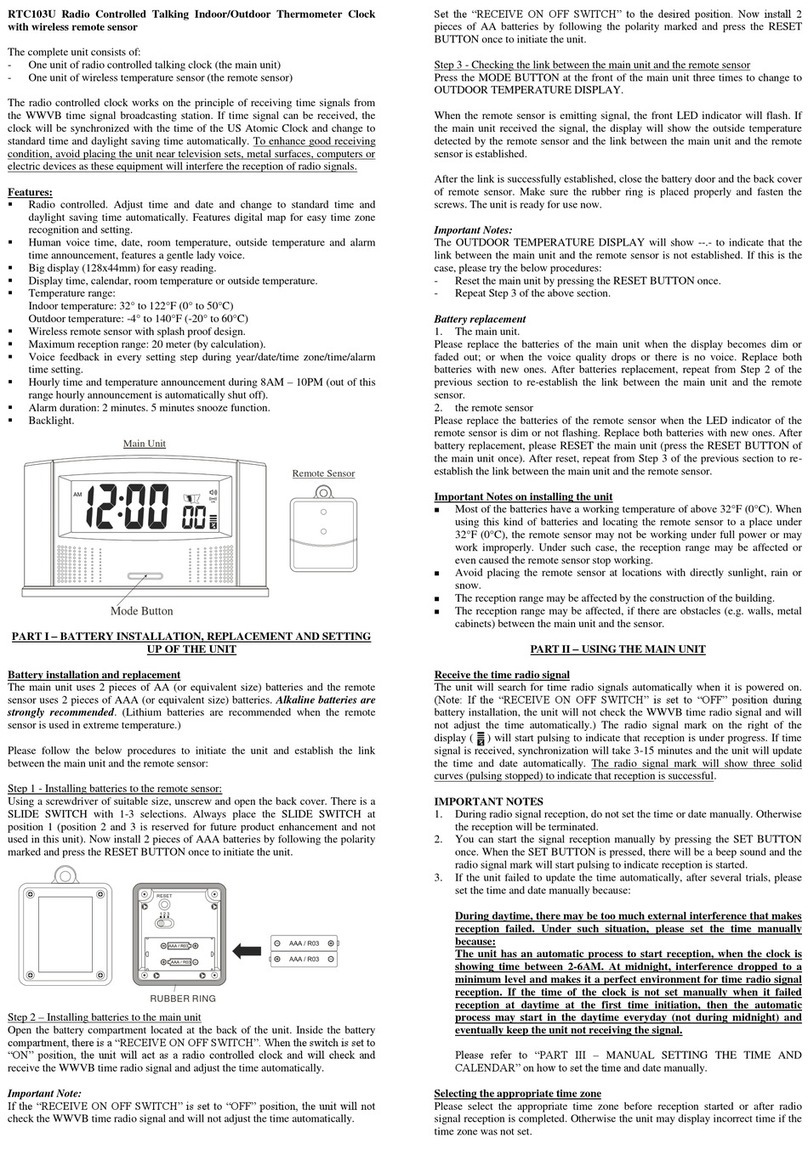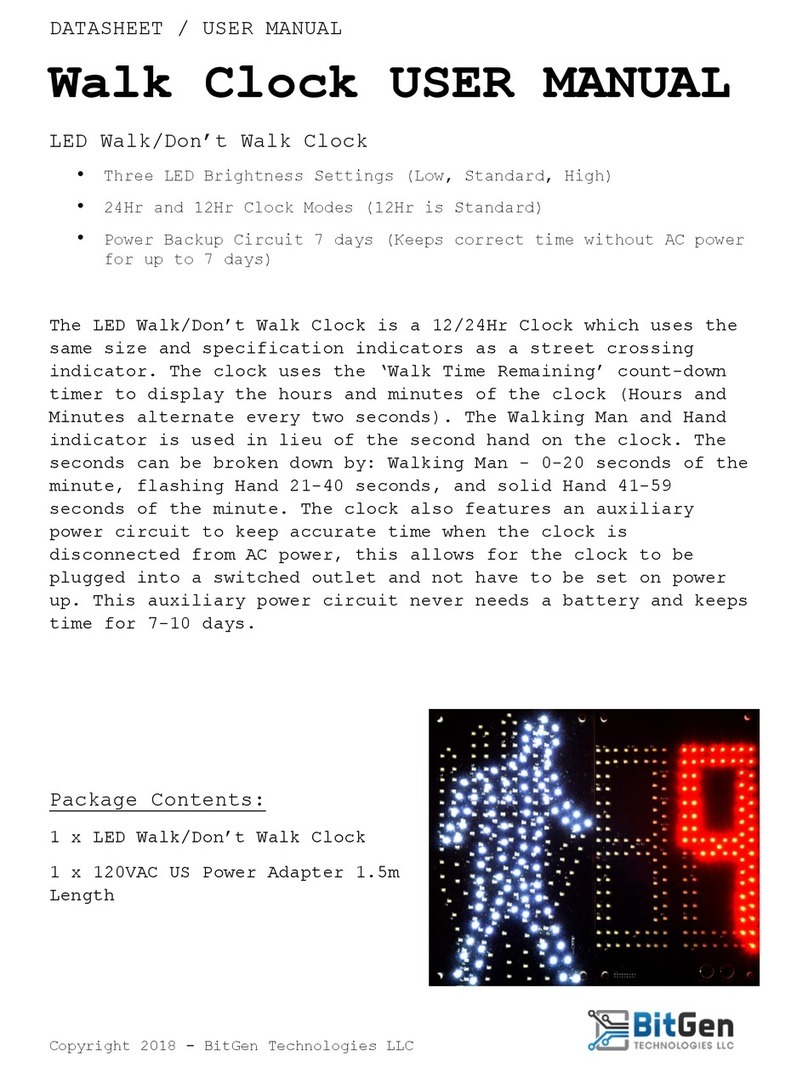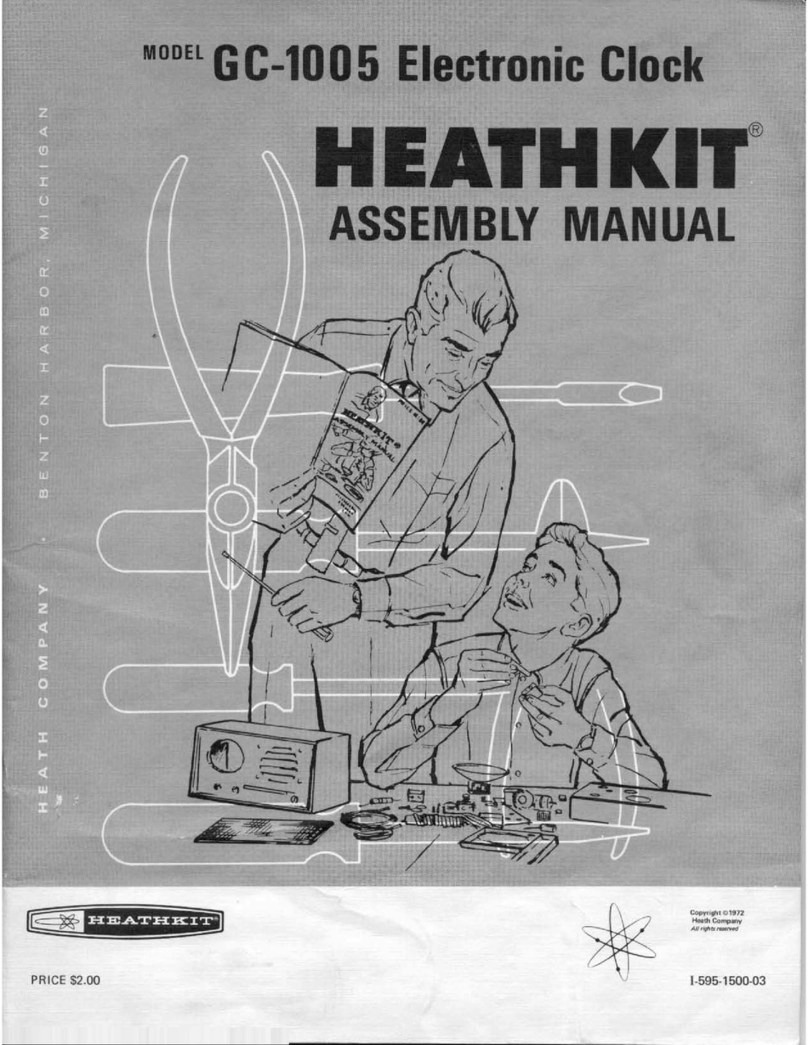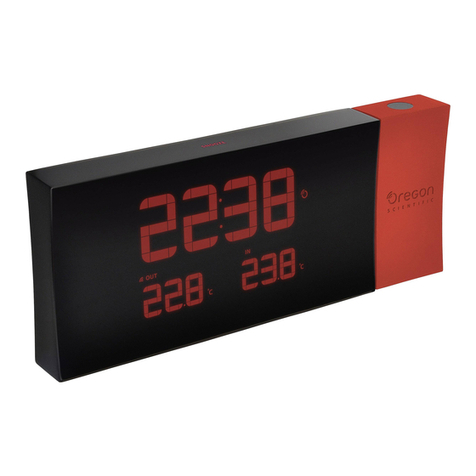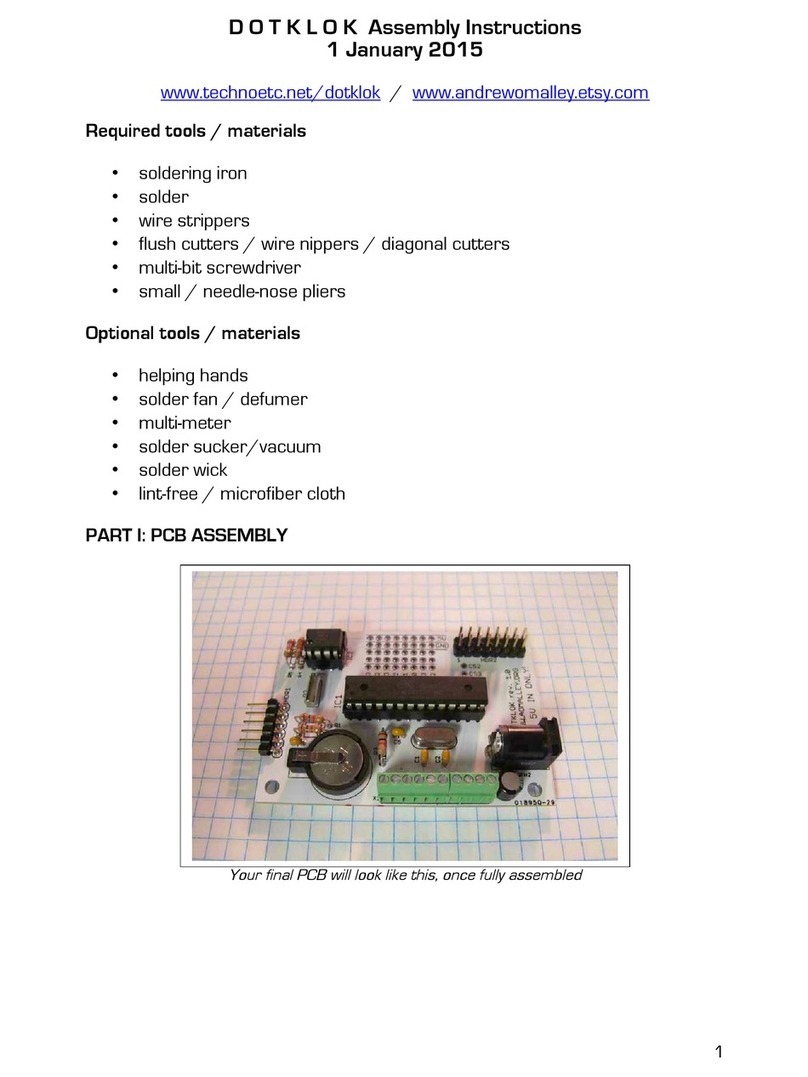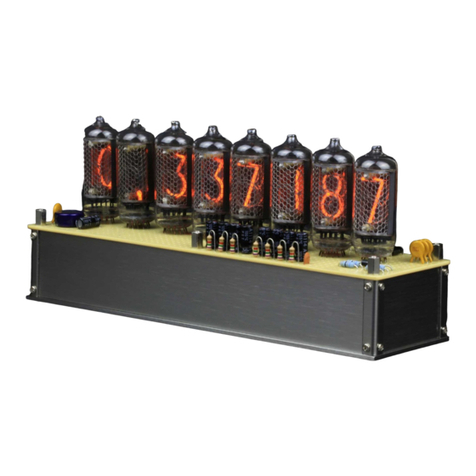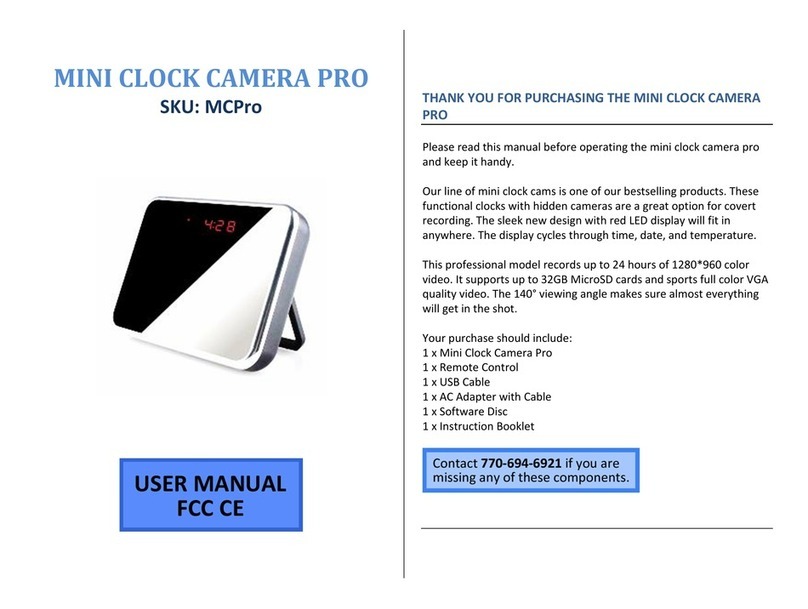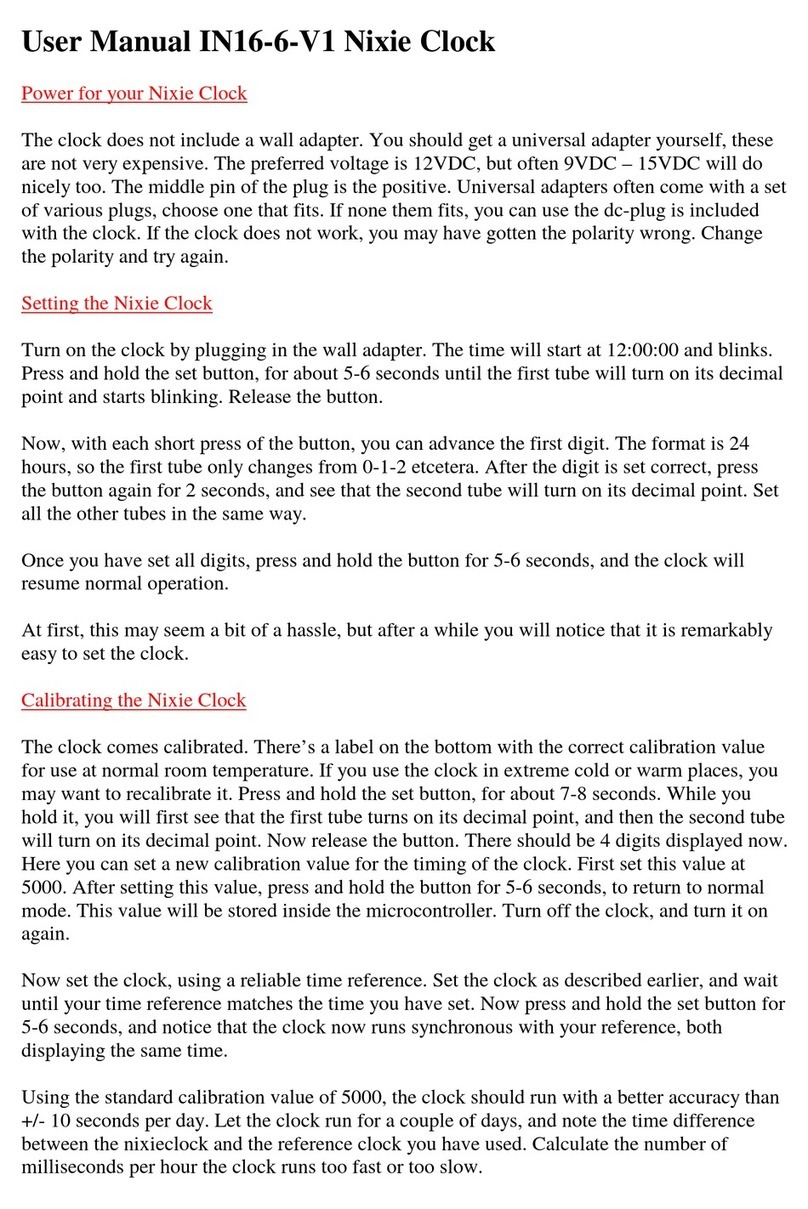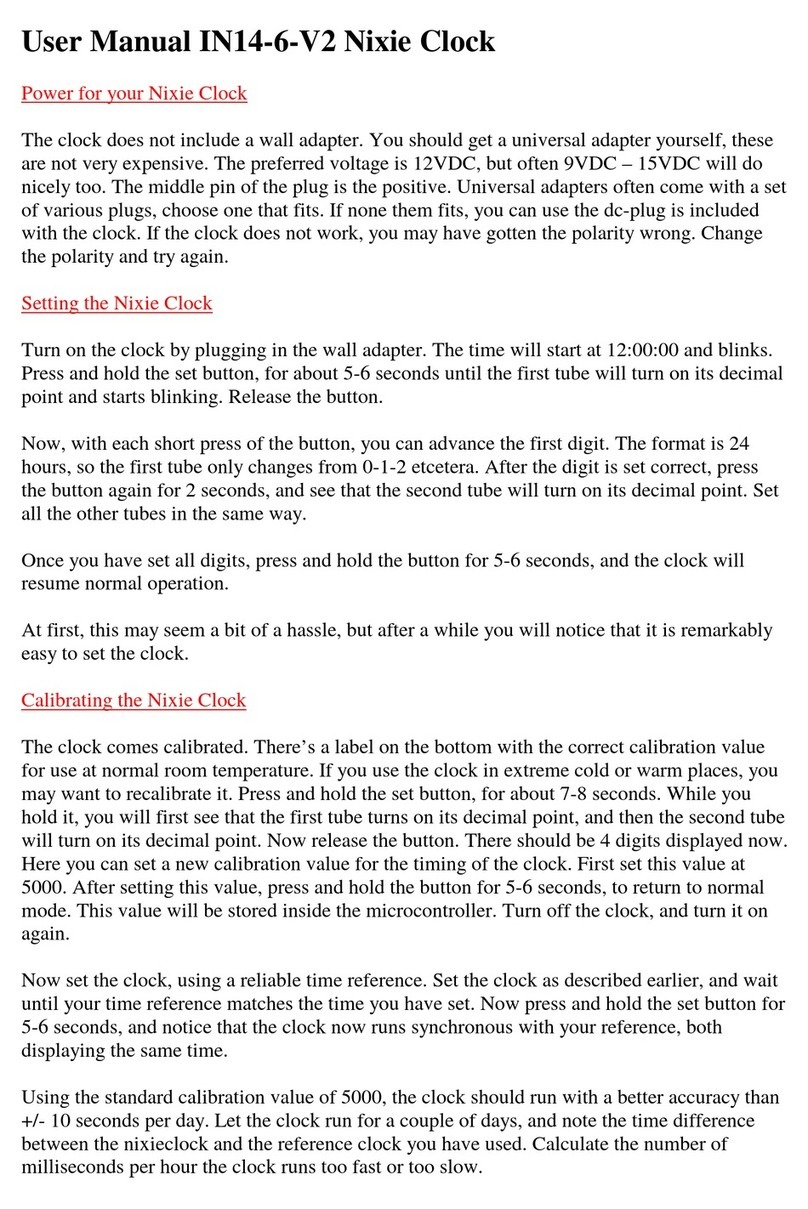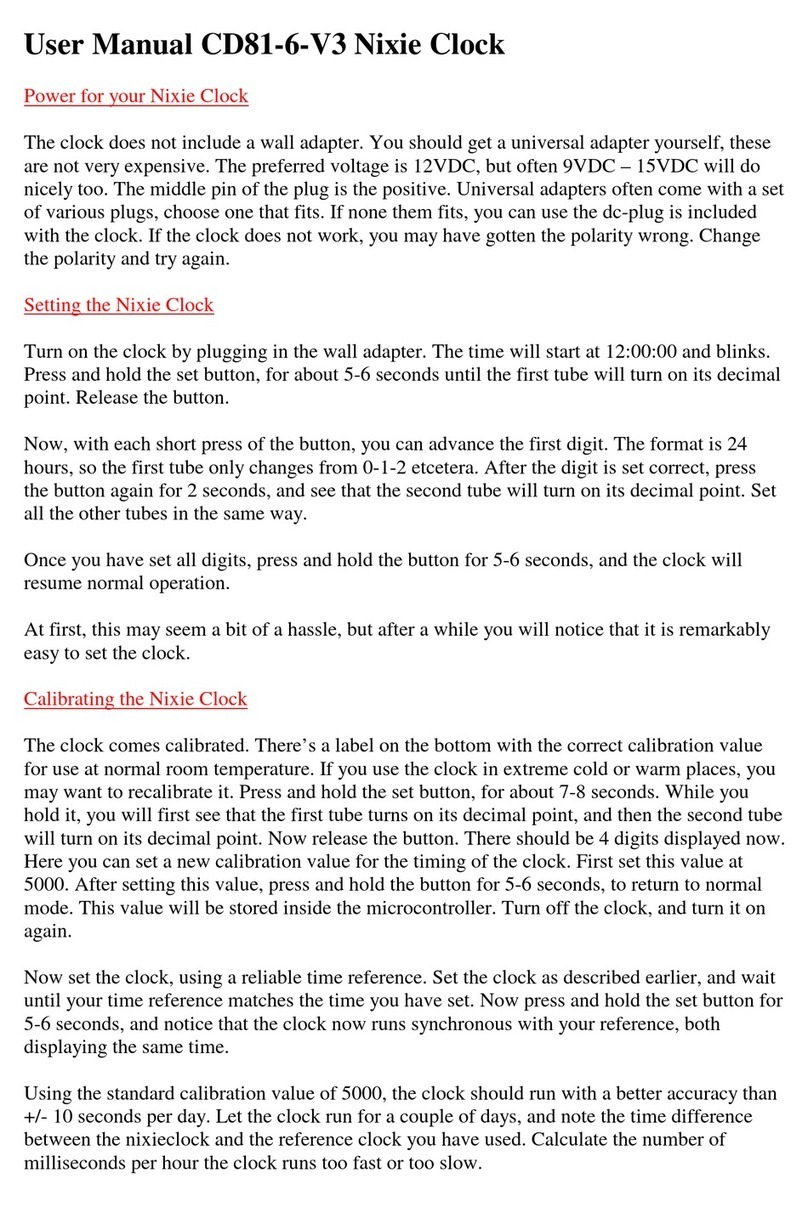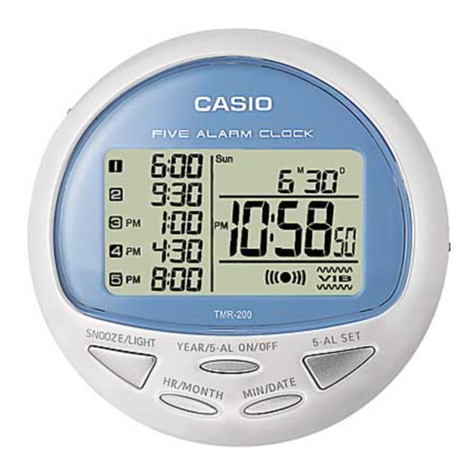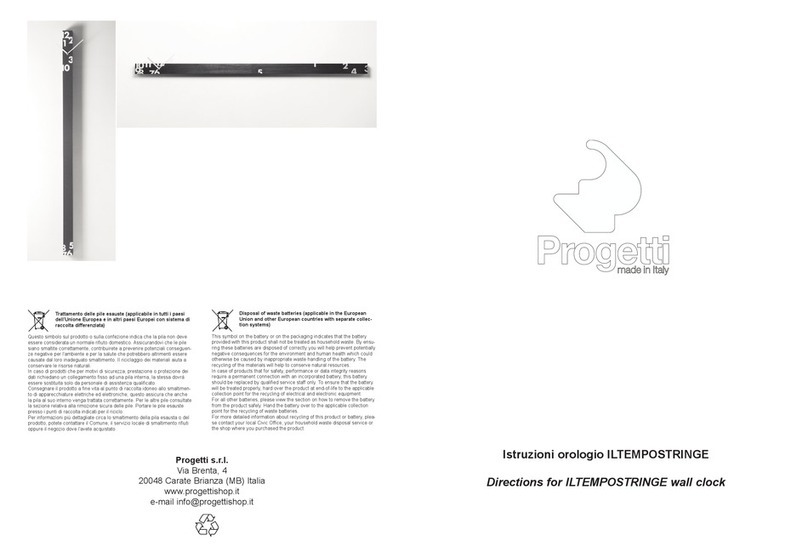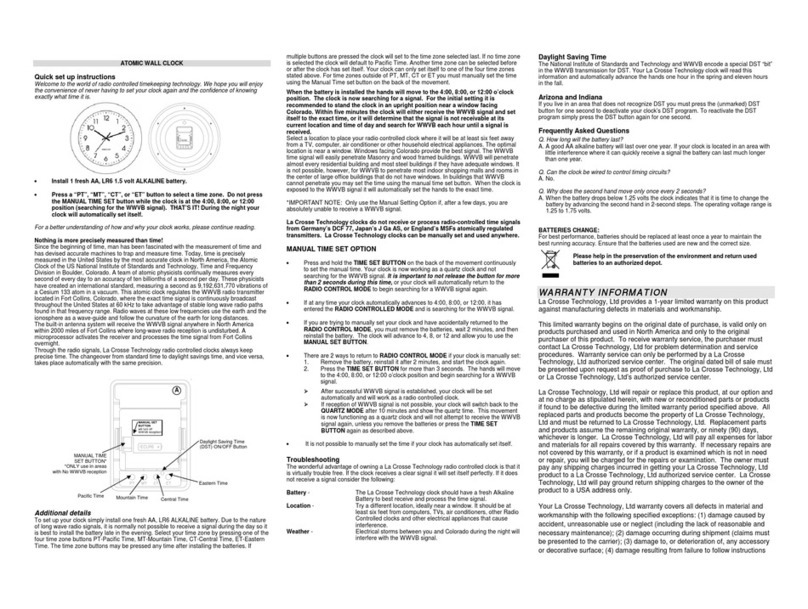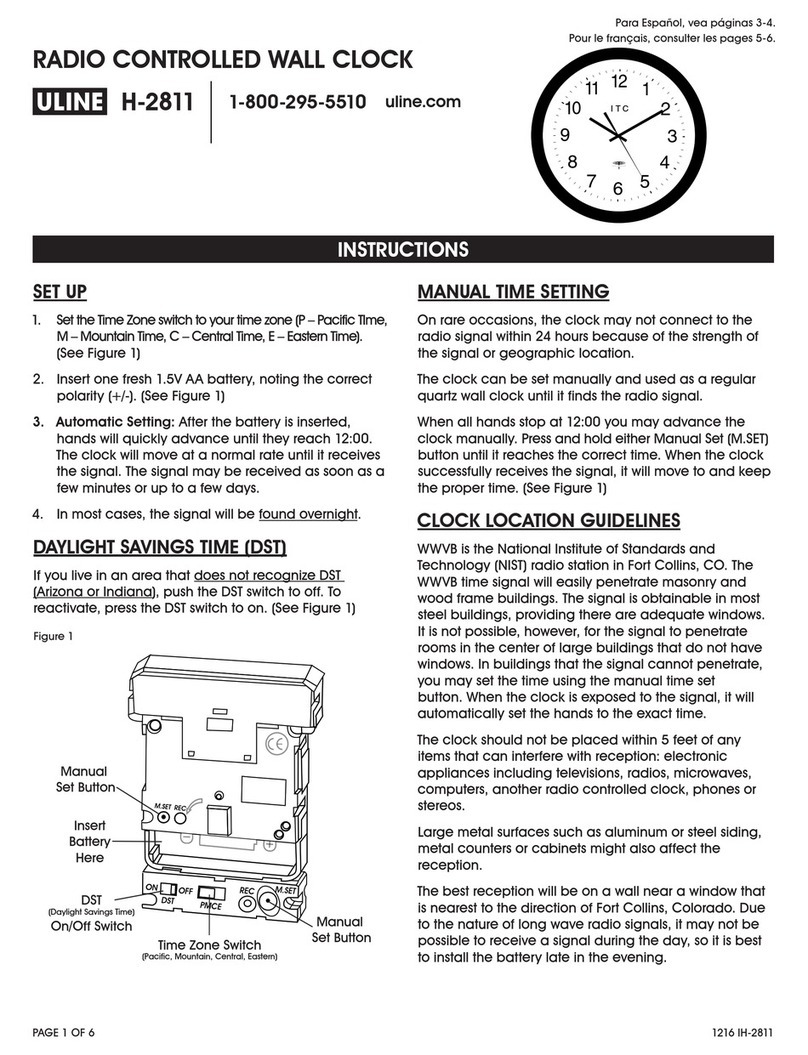between the nixieclock and the reference clock you have used. Calculate the number of
milliseconds per hour the clock runs too fast or too slow.
Example: after 2 days, the nixieclock seems 7 seconds too fast. Divide by 48 hours,
And multiply by 1000. That’s 145 millisecond per hour. The clock needs to run 145
milliseconds per hour slower, so the new calibration value will be 5000 - 145 = 4855.
Enter the new calibration value, turn off the clock, and turn it on again. Now you can set the
clock, and it will be more accurate now. Repeat the procedure if need be.
Setting Display Off Time
Nixietubes last very long, but possibly not forever. You may want to use this option, to turn
the tubes off during the night. Press and hold the set button, for about 9 seconds. You will
first see that the first tube turns on its decimal point, and then the second tube will turn on its
decimal point, and then the third tube turns on its decimal point. Now release the button.
There should be 2 values displayed now. These values tell you at what hour the display goes
off, and at what hour it turns on again. Adjust the values to your preferences. To save the
values, hold the button for 5-6 seconds, to return to normal mode. The value will be stored
automatically inside the clock. If you don’t want to use this option, put both hours at 00. (or
set them at equal values). For your information, rumours tell the tubes last for 50.000 hours. I
have reasons to believe it will be actually longer than that, as the current at which the tubes
are driven is very low and well regulated in this design. 50.000 hours equals to more than 5
years. Lifetime is defined as the time it takes for the nixies to fade to 50% of their initial
brightness.
Setting General Options
In this option setup you can select ‘fading’ display of the tubes, and also you can turn off the
flashing neons. Press and hold the set button, for about 11 seconds. Notice that the first tube
starts flashing, and then the second tube, the third, and the fourth tube. Now release the
button. There should be 4 numbers displayed now, the first ‘1‘ and the others ‘1’ or ‘0’. The
first number tells what category of options we are about to change. The other three tell us if an
option is on or off. When set to ‘1’ the option is turned on, when set to ‘0’ the option is turned
off. First select the category you want to edit. This is done by changing the first digit. Then
you can alter the settings for that category.
Adjust the values to your preferences, according to this list:
Option Categories:
1 - Fading On=1, Flashing Neon=1, Neon On=1 (Default 1-1-1)
2 - DCF77 On=1, Timezone=-1 for UK, Not used. (Default (0-0-0)
3 - RTC On=1, Not used, Not used. (Default 0-0-0)
4 - 12 Hour format On =1, No Leading Zero=1, Not used. (Default (0-0-0)
The first category deals with the behaviour of the tubes and the little neon indicator. You can
choose ‘fading’ tubes, or turn off the neon flashing, or even turn off the neon entirely.
The second category deals with the DCF77 atomic time receiver. This option is only for
Europe. You can turn it on, and adjust the timezone for UK residents.
